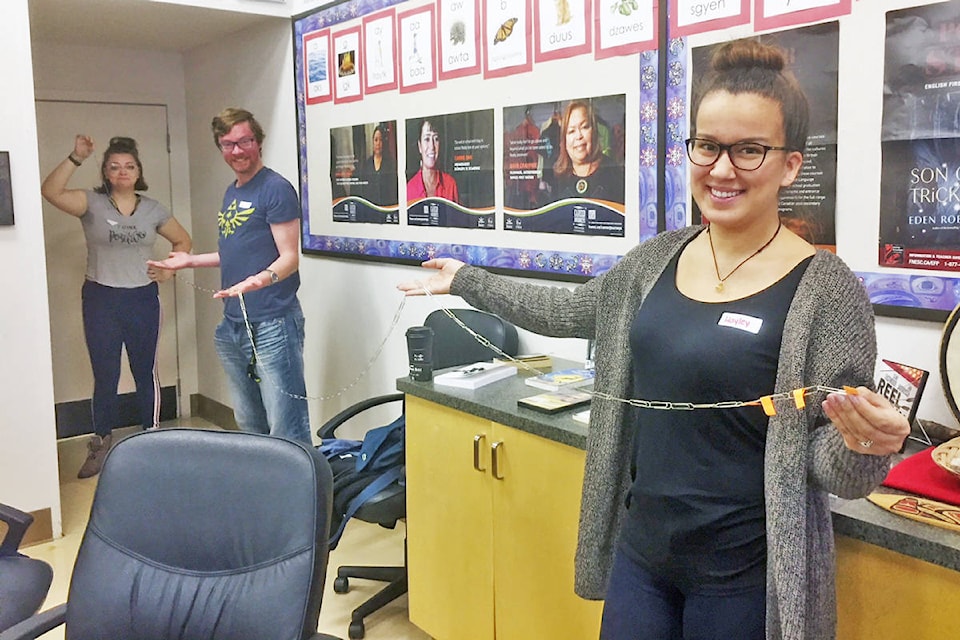School District 52 (SD52) teachers had an opportunity to learn about the ancient ancestors of the Ts’msyen people on Oct. 19.
Instructors from the district’s Aboriginal Education Department led out in a series of workshops during the teacher’s professional development day. Approximately 30 teachers attended the session.
READ MORE: Prince Rupert school district sets record French immersion enrolment
Lori Burger, who was one of the instructors, said the workshops were designed to help increase understanding about the role ancient oral histories — called Adaawx — play in Ts’msyen culture and how those histories help to enrich modern archaeological and scientific discoveries.
“Teachers were able to see that both types of information aligned and are considered scientific fact,” said Burger, who taught alongside Tannis Reis Calder, Tina Demings and Ben Spencer.
The workshop was developed as a part of the new B.C. curriculum’s increased emphasis on incorporating indigenous culture and worldviews into student education. Calder added that showing how the science and oral traditions combine helps to provide a more full picture of First Nations history for both teachers and students.
“Yes we can find out about the DNA and times and years and things, but we don’t get the full story until you hear about the Adaawx,” Calder said. “The Adaawx tells us when people migrated, why they migrated, why they did the things they did and who the people were.”
“It really helps to round out and give you a sense of these people who lived hundreds and thousands of years ago.”
During the workshops, teachers participated in a number of interactive activities that helped illustrate Ts’msyen historical concepts and make them real.
For example, teachers were put into groups where they discussed how many generations back they could remember from their own families before comparing it to the times outlined in the Ts’msyen oral histories.
The teachers then created chains out of paper clips or blocks to physically represent those time-lengths and compare the difference.
READ MORE: Collaboration key to success for new SD52 superintendent in Prince Rupert
“One group used paper clips stretching all the way across the room for the Adaawx,” said Calder. “And the section of time they can remember is barely the width of their hand, and that’s barely a third of the time back.”
Burger and Calder said they received positive feedback for the workshop from teachers, who requested more in the future.
“A lot of them said they wish it had been longer because there were a lot of discussions that could have come out of it and more they wanted to know,” Burger said.
newsroom@thenorthernview.com
Like us on Facebook and follow us on Twitter
